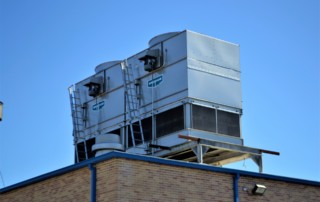A living roof, also known as a green roof, indicates a roof structure covered by a waterproofing membrane and then covered partially or completely by vegetation of some kind.
Whether showcasing bushes, trees, or flowers, the living roof features growing mediums which have many benefits for both the property owner and the environment. Used on homes throughout the world for centuries, living roofs are nearly non-existent for residential Sarasota or Venice area homes – but are beginning to gain acceptance and exposure in commercial venues. (Check out this living roof installed in Sarasota’s Bayfront Park.)
Let’s face it, we don’t expect to see Venice homeowner’s association approving this unconventional roof choice anytime soon. But if you live in a rural area, a non-deed-restricted neighborhood, or have a commercial building, this idea may intrigue you.
Benefits of a Living Roof
Did You Know? Experts agree that virtually any roof can be retrofitted to become a living roof.
A green roof substitutes plants for conventional roof coverings such as asphalt shingle, clay tile, or metal. Living roofs provide many health and economic benefits, not only for the homeowner, but for the neighborhood, community and the environment.
- Minimized cooling costs: A living roof is a super-insulator, and allows your home to stay cooler during the summer months. In fact, a recent study determined that a green roof could reduces your A/C demand by over 50 percent.
- Reduced noise: The green materials and soil mixture of a living roof both absorb and deflect much of the noise occurring outside the home.
- Biodiversity and environmental support: A living roof is certainly more beautiful than a traditional roof, and can provide an additional functional living space for the homeowners. Green roofs also offer food and shelter for native birds for are losing their habitats in rapidly growing cities and communities.
- Diminished “urban heat island effect.”: The heat island effect (also occurring in suburbia) is the increase in temperature resulting from replacing natural vegetation with homes, shops and parking lots. The raised temperature affects smog levels and increases energy demand for cooling. A living roof community greatly minimizes this effect.
- Increased oxygen in the air: Plants collect carbon dioxide from the air and through photosynthesis, replenish the air with fresh oxygen. The plants on a single residential green roof produce more oxygen than a typical family consumes in a year.
- Less rainwater runoff: A green roof absorbs about 40 percent of the rainwater, then filters out pollutants making runoff much cleaner. Because the living roof both minimizes and delays rainwater runoff, it can help when sewers are overburdened by our summer deluges.
How are Living Roofs Made?
Also known as an “ecoroof”, a living roof is typically constructed in 5 layers. The first two are the same as a conventional roof: the roof deck and waterproof membrane. On top of those elements, though, are a soil-filter fabric, several inches of lightweight soil mix and drought-tolerant plants.
There are two main types of green roofs. An extensive green roof is low-profile and primarily functional. Extensive roofs generally offer a 3-inch-deep soil mixture which is lighter and more affordable; and plant variety is usually limited to low maintenance, ground cover type greenery.
By contrast, an intensive green roof is more high-profile and can also be described as a roof garden. The soil mixture is much deeper to accommodate a broad spectrum of plant life. The intensive roof is not only functional, it is designed to provide an additional living space and an aesthetic benefit.
While this type of roof may not be possible for many Venice homeowners, it may be a great option for you.
If you are in need of a new roof, roof repair, or simply need some roofing advice – call the experts at [company_name]. No matter what your roofing project, we promise you’ll love our service and quality.




